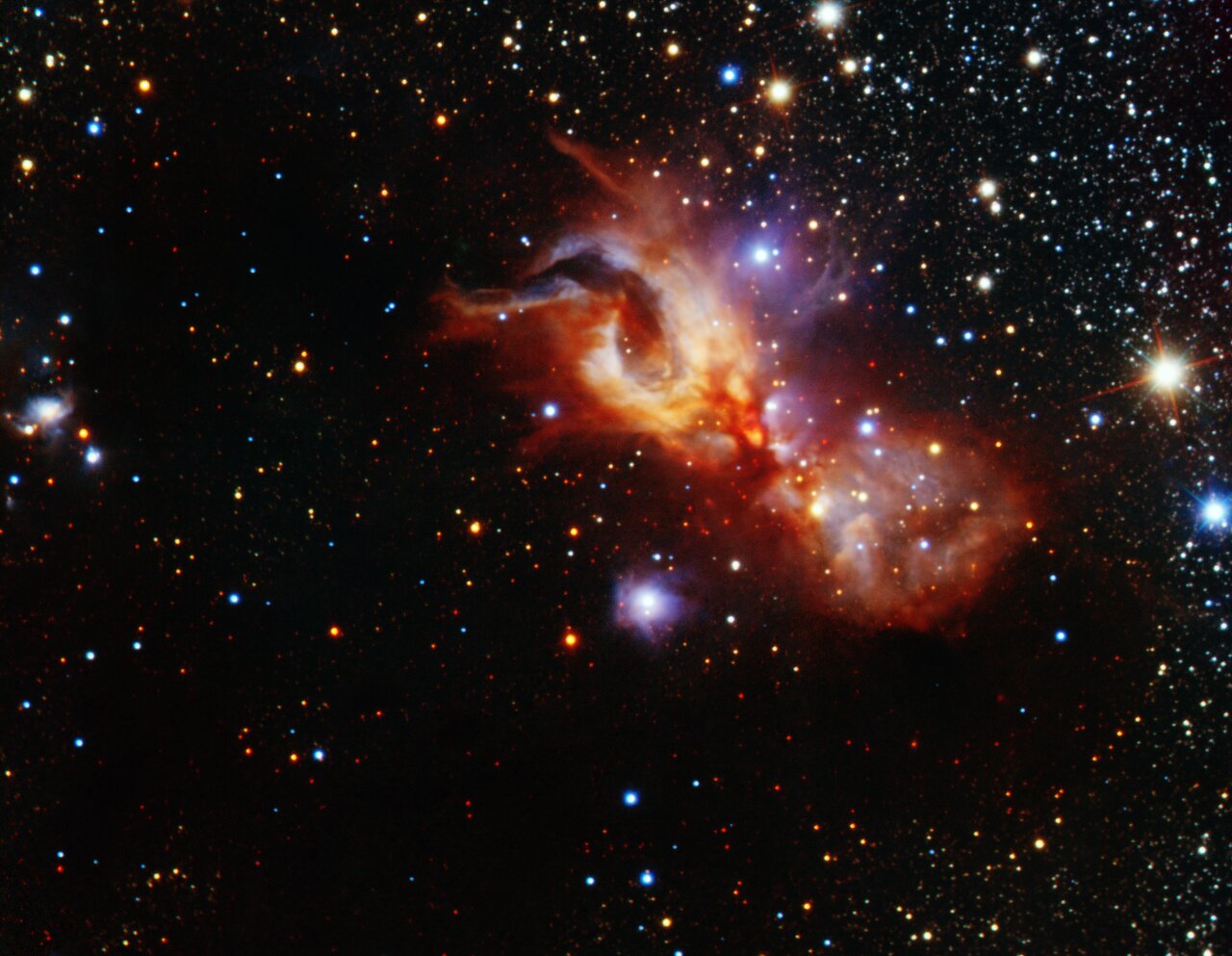The Beautiful Messiness of Star Birth
December 28, 2016

A new image released today by the Gemini Observatory offers a deep, revealing view into an active stellar nursery. The infrared view peels back layers of obscuring gas and dust to unshroud the inner workings of star formation – and the chaos that accompanies the beautifully messy process of starbirth.
In the direction of the constellation of Sagittarius, some 5,500 light-years away in the southern Milky Way, is a chaotic caldron of stellar birth known as GGD 27. While such stellar nurseries are sprinkled liberally throughout our Milky Way Galaxy, GGD 27 presents an especially compelling snapshot of stellar birth.
At first glance it looks like chaos. However, this seemingly random cloud of gas and dust is home to several nascent stars interacting in complex, but predictable ways. Millions of years from now the prenatal cloud of gas and dust will disperse and a cluster of stars will emerge much like a butterfly from its chrysalis. Until then this beautiful cloud will slowly (by human standards) evolve and allow astronomers to explore the complex process of star birth.
The new infrared Gemini image peers deep into GGD 27 where a massive developing star (called a protostar) dominates the central region of the nebula. Identified as GGD 27-ILL this future star already glows several thousand times brighter than our Sun and powers a bipolar outflow where gas streams away at supersonic speeds propelled by intense magnetic fields. Other forming stars in the area complicate the scene while adding to its beauty.
Astronomer Jungmi Kwon (The University of Tokyo, NAOJ, ISAS/JAXA, and JSPS) has studied the region around GGD 27-ILL by using polarimetry to measure the polarization of light. Kwon’s team used the IRSF 1.4-meter telescope with the SIRPOL imaging polarimeter at the South African Astronomical Observatory to study the region around the protostar GGD 27-ILL and measure what is called circular and linear polarization. The measurement of light’s polarization can be a very powerful tool for inferring magnetic fields of circumstellar structures around protostars. Kwon explains, “... patterns of linearly and circularly polarized light around GGD 27-ILL appear to result from a combination of dense inner and fainter outer lobes, suggesting episodic outflows.” It is estimated that the outflows, known as bipolar outflows, surrounding GGD 27-ILL have the greatest expanse ever seen around a young protostar, extending over three light years from end-to-end.
"This new image from Gemini is quite stunning and shows many of the structures we have observed in our research, but in a whole new light," said Kwon.
Contacts
Peter Michaud
pmichaud@gemini.edu
808 974-2510
808 936-6643
Gemini Observatory
Fernanda Urrutia
furrutia@gemini.edu
+56 (51) 2205794
Gemini Observatory
La Serena
Chile
